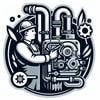Leadership and Motivation - Chapter 1, Part 2 - PDF
Document Details

Uploaded by SmootherEpitaph1188
CFP des Moulins
Tags
Related
- LMGT211 Human Resources Management: Motivation and Leadership PDF
- Business Leadership Motivation Theories Slides PDF
- Leadership & Human Resource Management - Vorlesung 1 (PDF)
- Leadership & Human Resource Management Vorlesung 1 PDF
- AEM2200 Introduction to Business Management Motivation PDF
- Leadership Styles PDF
Summary
This document is an introduction to leadership and motivation in an organizational context. It covers various leadership styles, motivation theories like Maslow's Hierarchy of Needs and Herzberg's Two Factor theory, and the importance of understanding organizational behavior. Practical strategies for motivating employees to enhance workplace performance are also highlighted.
Full Transcript
## Leadership and Motivation ### Introduction - This document discusses leadership and motivation in an organizational context. - It explores different theories of leadership and their application in different situations. - It provides an overview of different models of motivation, such as Maslow...
## Leadership and Motivation ### Introduction - This document discusses leadership and motivation in an organizational context. - It explores different theories of leadership and their application in different situations. - It provides an overview of different models of motivation, such as Maslow's Hierarchy of Needs, Herzberg's Two-Factor Theory, and Vroom's Expectancy Theory. - It emphasizes the importance of understanding the needs and motivations of individual employees. - It outlines practical strategies for motivating employees and enhancing workplace performance. ### Leadership Styles **Figure 1.4 presents five leadership styles:** - **Impoverished:** Leadership with minimal effort, similar to a Laissez-faire approach. - **Task-oriented:** Focuses on productivity with little attention to employee satisfaction, similar to autocratic leadership. - **Country Club:** Emphasis on employee support and involvement in decision-making, similar to democratic leadership. - **Team:** Strong focus on tasks and meeting employee needs. Leaders act as group facilitators and coordinators. - **Middle of the Road:** Balances task and employee needs, but not excessively in either area. **Figure 1.4 also illustrates these leadership styles on a grid:** - The vertical axis represents "concern for people." - The horizontal axis represents "concern for production." - Each leadership style is placed on the grid based on its relative focus on these two concerns. **Key takeaway:** Effective leadership requires finding a balance between task and employee needs. ### Leadership Situation - **Figure 1.5 presents the Situational Leadership model:** - The model suggests that the best leadership style is context-dependent, based on the situation and the maturity level of the employees. - It outlines four leadership styles: Delegative, Direcive, Persuasive, and Collaborative. - The model can be used to understand the appropriate style for each employee based on their maturity level in terms of competence and willingness to take on challenges. **Key takeaway:** Effective leaders adapt their style based on the specific situation and the maturity level of their team members. ### Organizational Behaviour - **A crucial element of leadership is the understanding of organizational behavior.** - This includes individual and group behavior. - It's essential for leaders to understand how to predict and influence employee behaviour in order to achieve optimal performance. ### Individual Behaviour - **Individual behavior is influenced by various factors, such as:** - Attitudes - Personality - Perception - Knowledge - Motivation. - **Key takeaway:** Employee attitudes towards work can significantly influence behavior, both positively and negatively. - Leaders should strive to create a positive work environment that fosters employee satisfaction and motivation. ### Group Behavior - **Groups often exhibit unique behaviors distinct from individual behaviors.** - **Types of formal groups:** - **Command Groups:** Traditional work groups with formal authority structure - **Cross-Functional Teams:** Individuals with diverse skills work together to achieve specific goals. - **Self-Managed Teams:** Teams with autonomy to manage their work processes. - **Task forces:** Temporary groups formed for specific projects. **Group development stages:** 1. **Forming:** Individuals join the group. 2. **Storming:** Group members establish their roles and influence within the group. 3. **Norming:** Group norms and expectations are established. 4. **Performing:** The group operates efficiently and effectively. 5. **Adjourning:** The group disbands or transitions to a new phase. ### Goal Setting - **Traditional Goal Setting:** Objectives cascade down from senior leadership to employees, ensuring alignment with organizational goals. - **Management by Objectives (MBO):** Managers and employees collaborate to establish and measure progress toward common goals. ### Motivation Theories - **Key takeaway:** Effective leaders motivate employees by aligning their goals with organizational goals and creating a supportive environment. #### Path-Goal Theory - Emphasizes the leader's role in guiding employees towards their goals. - It highlights the importance of clear goals, rewards, and support from leaders. #### Management by Objectives (MBO) - Leaders help employees set goals and provide support for achieving them. - This process involves regular feedback and evaluation. #### Reinforcement Theory - Uses rewards and consequences to drive desired behavior. - It recognizes that positive reinforcement can be more effective than punishments. #### Equity Theory - Employees compare their contributions and rewards to those of their peers - Perceptions of inequity can lead to decreased motivation or even unacceptable behavior. #### Expectancy Theory - Employees are motivated when they believe that effort leads to performance, performance is rewarded, and the rewards are valuable to them. #### Hierarchy of Needs Theory by Maslow - Individuals fulfill basic needs in a hierarchy of importance: - Physiological - Safety - Belongingness - Esteem - Self-actualization. #### Two-Factor Theory by Herzberg - Separates factors into "hygiene factors" and "motivators:" - **Hygiene factors:** These factors (e.g., salary, job security, company policies) prevent dissatisfaction but don't necessarily motivate employees. - **Motivators:** These factors (e.g., achievement, recognition, growth opportunities) are more likely to drive employee satisfaction and motivation. ### Conclusion - Effective leadership involves understanding and leveraging different motivation theories. - Leaders must tailor their approach to align with organizational goals, employee needs, and individual characteristics. - By understanding the complexities of motivation, leaders can create a positive and supportive work environment that encourages high performance and employee success.